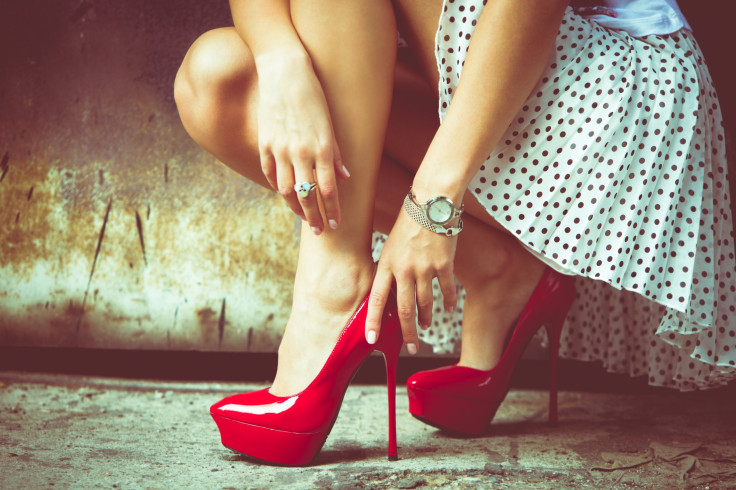Weak In The Knees: Wearing High Heels May Cause Premature Osteoarthritis Of The Knee

Slipping into a pair of stilettos is not just painful for the moment, it could mean you’re in for a lifetime of pain. According to a recent study published in the Journal of Orthopaedic Research, wearing 3.5-inch heels or higher could lead to prematurely aged knee joints and increase a woman’s risk of developing osteoarthritis.
High heels have been known to cause aches and pains, including lower back problems and muscle spasms. Extended wear of high heels leads to the continual bending of the toes into an unnatural position that can cause complications, from ingrown toenails to irreversible damage to leg tendons. This is particularly frightening news for the one in 10 women who wear high heels at least three days a week, according to the American Osteopathic Association (AOA), with a third of these women falling while wearing them.
A team of researchers from Stanford University Medical Center sought to examine the effects of high heel wear and increased weight on the knee during walking with 14 healthy female volunteers. To compare gait parameters between the shoes, added weight, and walking style of speed, the women wore different pairs of shoes: flats, 1.5-inch heels, and 3.5-inch heels. Heavy vests that increased their body weight by 20 percent were also tested on the women while they wore the assigned shoes.
The findings revealed there were some significant walking patterns associated with the two heels heights tested and the 20 percent extra weight. Women tended to bend their knees more during specific phases of their walk. They walked slower in heels, but the extra weight did not affect walking speed.
In other words, the higher the heel, the more likely the knee would bend when the foot hit the ground. This puts a lot of strain on the knee joint, especially for women who are overweight.
“Many of the changes observed with increasing heel height and weight were similar to those seen with ageing and OA [osteoarthritis] progression,” the researchers said, adding that, “this suggests that high heel use, especially in combination with additional weight, may contribute to increased OA risk in women.”
There are other factors that could influence the association between footwear and joint problems that the study did not observe. For example, frequency of high heel wear, what height, at what age they start and stop wearing them could be crucial to establishing a link between the two. However, the small study does give more insight on the gait changes that occur when a woman wears heels, or when she carries added weight.
This finding is extremely crucial, since it takes, on average, just over an hour for a woman’s feet to hurt when she slips on a pair of heels, according to a survey for The College of Podiatry. Women were also found to be three times as likely as men to cram their feet into uncomfortable shoes, which has led nine out of 10 to suffer problems like bunions, corns, sprains, and strains. The lack of public awareness of common foot complaints has contributed to the rise in these incidences.
Prolonged wearing of high heels can trigger stress fractures and trapped nerves. The AOA says wearing heels can actually shorten the muscles in your calves and in your back, leading to pain and muscle spasms. Therefore, any time you wear shoes that restrict the natural shape of the foot, you are prone to experiencing pain. Dr. Natalie A. Nevins, an osteopathic physician from Hollywood, Calif., told the AOA: “Many women who wear high heels often suffer a shortening of the Achilles tendon because once the heel is pointed upwards, it tightens up. Stretching it again or switching to flats can be very painful; it can even lead to plantar fasciitis.”
A rule of thumb er—toe should be if the shoe fits comfortably, wear it.
Source: Asay JL, Favre J, Titchenal MR, et al. Effects of high heel wear and increased weight on the knee during walking. Journal of Orthopaedic Research. 2014.



























